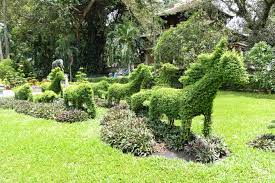
“ Topiary- is the horticultural practise of training perennial plants, by clipping the foliage and twigs of trees, shrubs, and sub-shrubs to develop and maintain clearly defined shapes, whether geometric or fanciful. The term also refers to plants which have been shaped in this way. As an art form it is a type of living sculpture. The word Topiary, derives from the Latin word for an ornamental landscape gardener, topiarus, a creator of topia.” Wikipedia .
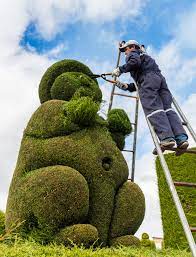
clipping topiary
Topiary is an ancient art from the Romans in Europe to the Parterre gardens of the 1600’s to the Eastern art of cloud pruning, a desire to clip, and train evergreen plants into unnatural shapes has always been the art of an accomplished gardener. Good topiary can add strong structure to your garden particularly in the winter months and if you have the patience and skill a great amount of creative fun as well. Here are some suggested shrubs that are tried and tested as good topiary subjects.
Buxus sempervirens: Box, the classic topiary shrub, although now sadly fraught with possible problems ( see below) This dense small leafed shrub is ideal for close clipping, and therefore for being trained into intricate shapes. Slow growing and will grow on poor shallow soils, it does not like being too wet. Grows in sun or part shade.
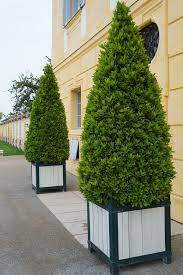
Lourus nobillis (cornes)
Laurus nobillis; Bay can become a very large tee, but is also happy being clipped, it can be a little tender in cold areas, so clip no latter than August, so new growth can harden before the winter. Moderately fast growing, with glossy dark leaves, it clips well into geometric shapes. It has the added advantage of being used in a lot of Italian cooking. It will grow in poor soils and in full sun and even into shade.
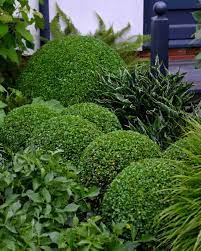
clipped myrtus balls
Myrtus communis terentina: a compact Myrtle, with dense mid green growth, the small leaves make it ideal for topiary. It can be tender so do not clip after late July. Small white flowers in mid summer and aromatic foliage.
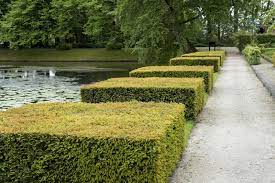
Taxus baccata-yew, clipped squares.
Taxus baccata: the mighty yew, with dark green needles and it’s ability to cope well in shade, makes a good topiary subject. It will cope even on chalky soils but it does not like to dry out, But equally it will not cope with water logging. It is not as slow as people think so with its small leaves it is good for the most artful topiary.

Ligustrum clipped into a peacock
Ligustrum ovalifolium: the humble privet, can be elevated to a whole new level when used for topiary. It has many advantages, being small leaved it can be easily chipped into animal shapes and it is quick growing, meaning it trains at speed up wire models, so perfect for the topiary enthusiast who is keen to have a Noah’s ark of animals.
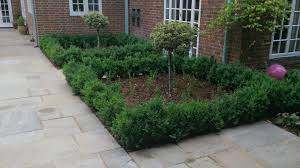
Varigated holly topiary lolly pop trees.
Ilex aquifolium ‘Marginate’: with mid sized holly leaves with creamy edged variegation and a female form with berries, this makes a topiary shrub with added benefits. Clips well into cones, pyramids, boxes and balls.
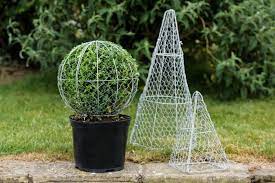
wire topiary model
Tip: you need good sharp shears and if you are trimming box have a bucket of week disinfectant to hand to keep dipping into, to try to prevent, both box tree caterpillars and infection of box tree blight. Which are now both common in South-East Britain, it may be a case of thinking of using one of the other shrubs I have suggested, as both of these horrors are now a real problem. Also the thing about maintaining good shapes in Topiary is trimming little and often to keep that crisp line. Also if you are going adventurous and thinking of a peacock or a more humble spiral, then a good frame work model, in chicken wire can be invaluable at helping you train new growth but also a guide to clipping your growing topiary.
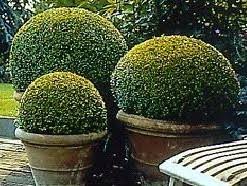
Topiary in pots
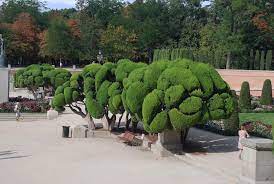
Cloud pruning Topiary on an impressive scale.
Good Luck and let your imagination go wild!
